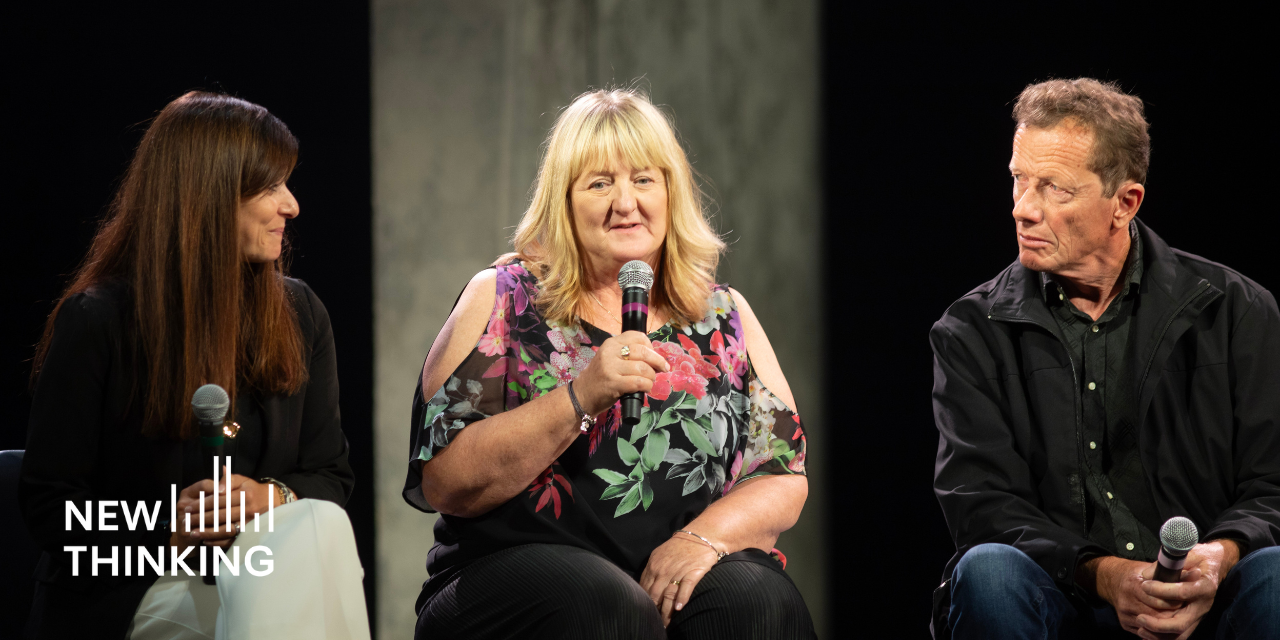David O’Keefe, head of the Manhattan District Attorney’s Crime Strategies Unit discusses his unit, his background, and his goals, moving forward.
In 2010, David O’Keefe was appointed the head of the Manhattan District Attorney’s Crime Strategies Unit by newly elected DA Cyrus Vance, Jr. The goal of the Crime Strategies Unit is ambitious: to attempt to prevent crime before it happens, rather than merely prosecute cases after an arrest. In this interview, O’Keefe describes his background as a prosecutor, how the unit began and the tools the office is using to meet its goals. Click here to read a feature article about the program.
How did you get involved in this work?
I went to law school to become a civil rights lawyer. I’ve been working for the Manhattan District Attorney for 18 years. Three years ago, District Attorney Vance asked me to run the Crime Strategies Unit. My interest comes from cases I prosecuted at the Polo Grounds; this was my first encounter with a “hot spot prosecution” model, using the understanding that areas with high rates of crime are usually driven by just a handful of people. This Polo Grounds case was a broad investigation of violence and drug crime, and I wondered, who are the people involved? I realized we were looking at a lot of people who were committing high rates of crime who were already being prosecuted in our office or in other parts of the city – but we didn’t know it. In a sense, that’s the core goal of our unit, to help connect the dots that might otherwise go unconnected.
How did you go about organizing the Crime Strategies Unit?
At first, District Attorney Vance was contemplating reorganizing the office around geographic lines. But it’s a big office and that would have been a lot of change. So with the Crime Strategies Unit, the question was, could we realize some of the benefits of geographical specialization without having to go through an extensive internal reorganization? I was assigned a team of five Assistant District Attorneys and a few analysts. All of the funding came internally. We didn’t have to raise any outside funding.
What were your first steps in the Unit?
We started by pulling together a reference of information about each police precinct in Manhattan. That was helpful to DA Vance, who had just been elected to office. For each precinct, we reviewed crime statistics and the problems the precinct was facing. We assigned an Assistant District Attorney in the Unit as a point of contact to each police precinct, which meant that the police knew exactly who to contact when they had a question as opposed to choosing from 450 different ADAs. Working with our partners in the precincts, we also identified hot spots and the names of the people committing the most crimes in each area. The question became, what can we do to incapacitate these people? It used to be we only went where the cases took us. Now, we can build cases around specific crime problems that communities are grappling with.
What can you tell me about your Arrest Alert system?
The Arrest Alert system has started to revolutionize the way cases are handled; I call it the “central nervous system” for intelligence-driven prosecution. The system existed in the past, but we’ve revitalized it. We are working on creating version 3.0. If a prosecutor has a case they’re working on, they can add names of persons of interest to the list and they will get an alert in the form of an email if that person is arrested anywhere in New York City. Before arrest alerts, prosecutors would likely have no idea if the person they were prosecuting had been arrested again while the case was active, particularly if the arrest happened outside of Manhattan. The arrest alert system has allowed us to break out of a reactive approach to prosecution to one that is focused on coordination and proactive measures. Our work starts even before an arrest occurs.
What kind of applications does the system have?
This system has all sorts of useful applications. It can help shape the plea offers made to the court. It can help us prepare a bail application in advance, or help us plan the strategy to enable an arrest. We’ve had precincts report how pleased they were that people committing crimes who used to get a slap on the wrist and a few days jail are getting a more substantial jail sentence when they show up on the system. It can also help us gain cooperation among crime victims, who are often reluctant to testify. If that person is arrested on another offense, the ADA will get a notification and it might become a factor in encouraging him or her to agree to help out on the case. The system is also helpful for keeping track of a witness, or someone else who may be involved in the case in one way or another. While it’s currently possible to put in an arrest alert for a person, or for a weapons offense, the new version will allow us to create an alert for any penal law crime, or for any arrest that occurs in a given geographic area.
How large is it?
It started out with a list of about 100 names. We track all gun arrests, and the system gets added to every day as more prosecutors find out about it and its usefulness. The appeal is obvious. We would ask precincts, “give us a list of the 25 people committing the most crimes,” and by day two they would have their first hit.
How do you go about doing your work?
We rely on partnerships within our organization and with other groups to do our job. For example, we partner with the Office’s Violent Criminal Enterprises Unit and we attend community affairs or precinct council meetings. I just came from a meeting with school safety officers to talk about how we can work together. We also work closely with the Office’s Community Affairs Unit, which is great at bringing problems to our attention. We also have a great relationship with parole. It’s all about using levers of influence. For example, if we have someone on our target list who’s about to come out of prison, we can go to parole and ask if they’re willing to put special conditions on the defendant.
How do you know you’re effective?
It’s a tough question, particularly since we’re pretty new. One sign is that whenever a police commander goes from Manhattan to another borough, his first question is, “who is my point of contact at the DA’s office?” We also knew we were having a positive effect when we were mentioned in a Compstat meeting held by the New York Police Department. Now the Police Department invites us to strategy meetings.
Have other prosecutors expressed an interest?
I was in Oklahoma last week and spoke at a conference. Someone from that state’s Attorney General’s office came up to me and said, “We need a statewide Arrest Alert system.” Philadelphia is interested as well.
What would be next on your wish list for the Crime Strategies Unit?
If I had my way, I would create a citywide system. Technology can go a long way towards addressing the problem of having five separate DA offices in a single city.

